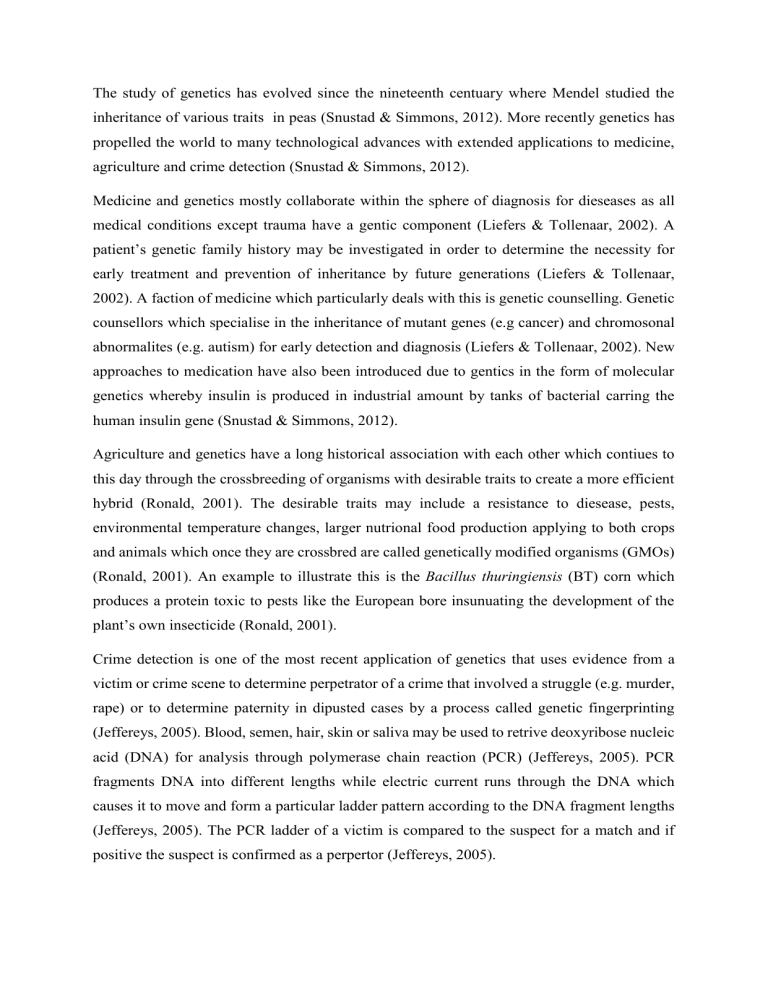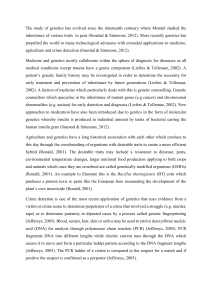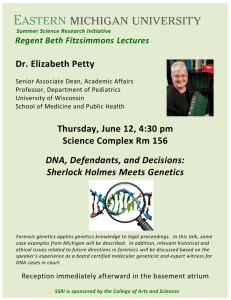
The study of genetics has evolved since the nineteenth centuary where Mendel studied the inheritance of various traits in peas (Snustad & Simmons, 2012). More recently genetics has propelled the world to many technological advances with extended applications to medicine, agriculture and crime detection (Snustad & Simmons, 2012). Medicine and genetics mostly collaborate within the sphere of diagnosis for dieseases as all medical conditions except trauma have a gentic component (Liefers & Tollenaar, 2002). A patient’s genetic family history may be investigated in order to determine the necessity for early treatment and prevention of inheritance by future generations (Liefers & Tollenaar, 2002). A faction of medicine which particularly deals with this is genetic counselling. Genetic counsellors which specialise in the inheritance of mutant genes (e.g cancer) and chromosonal abnormalites (e.g. autism) for early detection and diagnosis (Liefers & Tollenaar, 2002). New approaches to medication have also been introduced due to gentics in the form of molecular genetics whereby insulin is produced in industrial amount by tanks of bacterial carring the human insulin gene (Snustad & Simmons, 2012). Agriculture and genetics have a long historical association with each other which contiues to this day through the crossbreeding of organisms with desirable traits to create a more efficient hybrid (Ronald, 2001). The desirable traits may include a resistance to diesease, pests, environmental temperature changes, larger nutrional food production applying to both crops and animals which once they are crossbred are called genetically modified organisms (GMOs) (Ronald, 2001). An example to illustrate this is the Bacillus thuringiensis (BT) corn which produces a protein toxic to pests like the European bore insunuating the development of the plant’s own insecticide (Ronald, 2001). Crime detection is one of the most recent application of genetics that uses evidence from a victim or crime scene to determine perpetrator of a crime that involved a struggle (e.g. murder, rape) or to determine paternity in dipusted cases by a process called genetic fingerprinting (Jeffereys, 2005). Blood, semen, hair, skin or saliva may be used to retrive deoxyribose nucleic acid (DNA) for analysis through polymerase chain reaction (PCR) (Jeffereys, 2005). PCR fragments DNA into different lengths while electric current runs through the DNA which causes it to move and form a particular ladder pattern according to the DNA fragment lengths (Jeffereys, 2005). The PCR ladder of a victim is compared to the suspect for a match and if positive the suspect is confirmed as a perpertor (Jeffereys, 2005). Upon the analysis for the basis for the afore mentioned technological advancements in medicine, agriculture and crime detection it is evident that genetics is not just applicable but also the basis for the progression (Snustad & Simmons, 2012). REFERENCES Jeffereys A.J., 2005, Genetic Fingerprinting, Nature Medicine, 11, p. 1035-1039. Liefers G.J. & Tollenaar R.A.E.M., 2002, Cancer Genetics And Their Application To Individuaised Medicine, European Journal Of Cancer, 38:7, p. 872-879. Ronald P, 2011, Plant Genetics: Substainable Agriculture And Global Food Security, Genetics, 188:1, p. 11-20 Snustad D.P. & Simmons M.J., 2012, Genetics, 6th edn, John Wiley & Sons Inc., Singapore Xulu T.L. 218083145 Gene 240 Assignment 1 22-02-19 Prof. Adeluke


